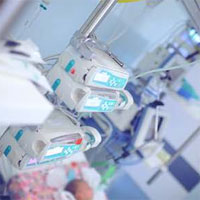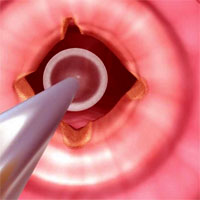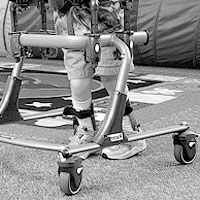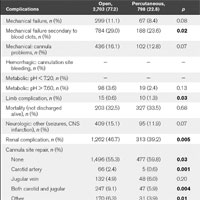Stories Category: PICU

Optimum Chest Compression Point for CPR in Children Revisited Using a 3D Coordinate System Imposed on CT
The optimum chest compression site (P_optimum) in children is debated: European Resuscitation Council recommends one finger breadth above the xiphisternal joint, whereas American Heart Association proposes the lower sternal... read more

Feasibility and Perceptions of PICU Diaries
The use of ICU diaries in the PICU setting is feasible and perceived as beneficial by families of critically ill children. Future studies are needed to better understand if PICU diaries may objectively improve psychologic... read more

Sedation and Neurodevelopmental Outcomes in PICU
As little as 30 minutes of exposure to anesthetic and sedative agents may adversely affect the developing brain. Safe, humane management of critically ill infants requires the use of sedative agents, often for prolonged periods.... read more

Metabolic-based Biomarkers Have Potential to Triage Children with Sepsis
A new study has validated potential biomarkers for a sepsis-triage model to distinguish sepsis patients requiring care in the pediatric intensive care unit (PICU) from sepsis identified in the pediatric emergency department... read more

What It’s Like in Pediatric Critical Care
As a medical student, do you ever wonder what it's like to specialize in pediatric critical care? Meet Joanna Kuppy, MD, a critical care pediatrician and assistant professor of pediatrics at Rush University Medical Center,... read more

Neonatal and Pediatric Respiratory Care
A comprehensive text on respiratory care for neonates, infants, and children, Neonatal and Pediatric Respiratory Care, 4th Edition provides a solid foundation in the assessment and treatment of respiratory care disorders.... read more

A retrospective observational study of acquired subglottic stenosis using low-pressure, high-volume cuffed endotracheal tubes
The safety of cuffed endotracheal tubes in the neonatal and critically ill pediatric population continues to be questioned due to the theoretical risk of acquired subglottic stenosis. The incidence of acquired subglottic... read more

Early Mobilization in the PICU
Mobilization of critically ill children, many with central lines, endotracheal tubes, and other life-saving devices, is associated with potential risks and complications. Hence, concerns about safety often guide staff perceptions... read more

Presenting Characteristics Associated With Outcome in Children With Severe TBI
Severe traumatic brain injury is a clinically heterogeneous disease that can be accompanied by a range of neurologic impairment and a variety of injury patterns at presentation. This secondary analysis of prospectively collected... read more

Should Pediatric Intensive Care Be Centralized? Trent vs. Victoria
The mortality rate is lower among children admitted to specialist pediatric intensive care units (ICUs) than among those admitted to mixed adult and pediatric units in non-tertiary hospitals. In the UK, however, few children... read more

Comparing Percutaneous to Open Access for Extracorporeal Membrane Oxygenation in Pediatric Respiratory Failure
The proportion of pediatric patients undergoing percutaneous extracorporeal membrane oxygenation cannulation is increasing. Mechanical and physiologic complications occur with both methods of cannulation, but percutaneous... read more

Approach to the Critically Ill Child: Shock
If you mainly treat adults or both adults and children like me, then you have probably heard the (very annoying) quote, "kids are not just small adults", and so I won't say it again. Well, I guess I just did, but at least... read more

The A.S.P.E.N. Pediatric Nutrition Support Core Curriculum
A valuable resource for certification preparation and the daily nutrition care of pediatric patients focusing on the importance of nutrition to the growth and development of children. Written with an interdisciplinary evidence-based... read more
Viral Sepsis in Children
Sepsis in children is typically presumed to be bacterial in origin until proven otherwise, but frequently bacterial cultures ultimately return negative. Although the incidence of viral-induced sepsis is not precisely known,... read more




